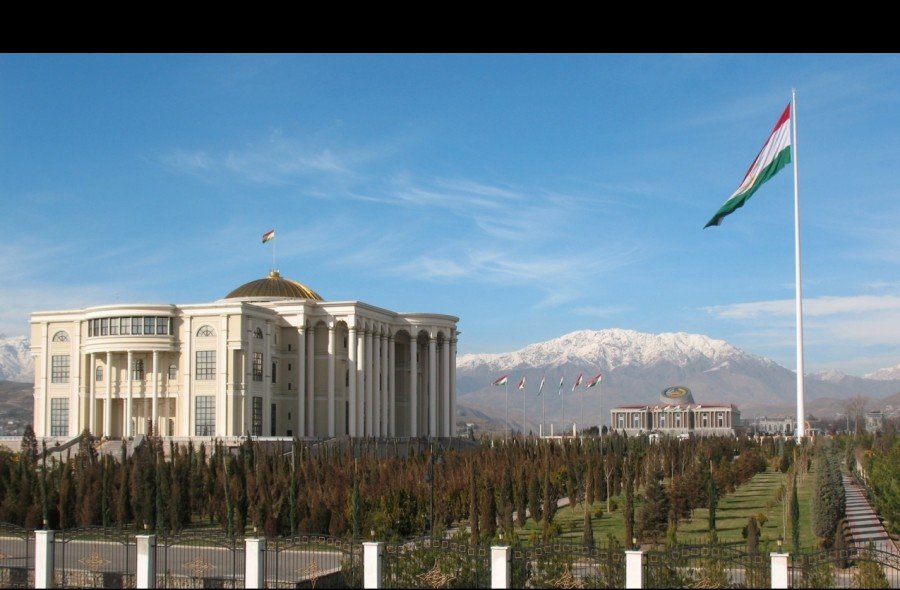
Tajikistan—the country in the south-eastern part of Central Asia. Tajikistan is bordered on the west and north by Uzbekistan and Kyrgyzstan, on the south by Afghanistan, and on the east by China. Total area of the territory of the Republic is 142.600 km2.
The independence of Tajikistan was proclaimed on 9th of September 1991. The capital of the Republic is the city of Dushanbe.
Tajikistan is a typical mountainous country with absolute heights from 300 to 7495 m. 93% of its territory is occupied by mountains belonging to the highest mountain systems of Central Asia—Tien-Shan and Pamir. Almost half of the territory of Tajikistan is situated at an altitude of over 3000m. The majority of the population and economic activities of Tajikistan are concentrated on 7% of its territory, in the valleys.
 By the 1st of January 2017, the population of Tajikistan estimated to be 8.742 million people, of which 26.4 % live in cities and 73,6 % in rural areas. The average annual population growth is about 2.5% per year.
By the 1st of January 2017, the population of Tajikistan estimated to be 8.742 million people, of which 26.4 % live in cities and 73,6 % in rural areas. The average annual population growth is about 2.5% per year.
Almost all climatic zones in Tajikistan, range from +500C to -600C. The climate of the country is arid with an abundance of heat and significant intra-annual fluctuations of its temperature. The absolute maximum of air temperature is -630С, which is collected from data results of Eastern Pamir. The absolute minimum is +470С, which is collected from data results from the south of the country. Duration of sunshine ranges from 2100 to 3170 hours per year. Average annual precipitation is 760mm. In the highlands desert of the Eastern Pamir rainfall reaches only 70-160mm while in the center ofl Tajikistan it can exceed 1800mm per year.
 In terms of water reserves Tajikistan takes the first place in the Central Asia. Mountain and foothill areas of the country make up the main area of flow formation of the Aral Sea. More than 80% of the runoff of the Amudarya and 1% of the Syr Darya River is formed in Tajikistan. In general it is 64 km3 per year or 55,4 % of water resources of the Aral Sea basin. The total volume of glaciers of the country is more than 845 km3, underground waters reach 18,7 km3 per year, and lake waters reach 46,3 km3.
In terms of water reserves Tajikistan takes the first place in the Central Asia. Mountain and foothill areas of the country make up the main area of flow formation of the Aral Sea. More than 80% of the runoff of the Amudarya and 1% of the Syr Darya River is formed in Tajikistan. In general it is 64 km3 per year or 55,4 % of water resources of the Aral Sea basin. The total volume of glaciers of the country is more than 845 km3, underground waters reach 18,7 km3 per year, and lake waters reach 46,3 km3.
 In Tajikistan, as well as all over the world, the climate change is clearly observed. In the broad valleys the average annual temperature over the last 65 years has increased by 0,7-1,2 0C, in mountainous and highlands areas by 0,1-0,7 0C, and in the cities by 1,2-1,9 0C. Due to the impact of the climate change, the glaciers of the country have changed and according to some estimates, have lost 20% of the volume and 30% of the area over the past 50-60 years.
In Tajikistan, as well as all over the world, the climate change is clearly observed. In the broad valleys the average annual temperature over the last 65 years has increased by 0,7-1,2 0C, in mountainous and highlands areas by 0,1-0,7 0C, and in the cities by 1,2-1,9 0C. Due to the impact of the climate change, the glaciers of the country have changed and according to some estimates, have lost 20% of the volume and 30% of the area over the past 50-60 years.
 With very little oil and gas reserves, development of coal fields are difficult. Tajikistan possesses vast inexhaustible reserves of hydropower resources. By estimations of experts, these reserves are approximately 527 billion kWh electricity per year. Currently, about 95 percent of the electricity generated in the country falls on the hydro power plants. In 2017 production of electricity throughout the country amounted to only 17,13 billion kW / hour, which is slightly more than 3% of existing potential. The potential exceeds three times the existing electricity consumption of the whole Central Asia. With the efficient use of this potential, regions can be ensured by cheap and environmentally clean electricity.
With very little oil and gas reserves, development of coal fields are difficult. Tajikistan possesses vast inexhaustible reserves of hydropower resources. By estimations of experts, these reserves are approximately 527 billion kWh electricity per year. Currently, about 95 percent of the electricity generated in the country falls on the hydro power plants. In 2017 production of electricity throughout the country amounted to only 17,13 billion kW / hour, which is slightly more than 3% of existing potential. The potential exceeds three times the existing electricity consumption of the whole Central Asia. With the efficient use of this potential, regions can be ensured by cheap and environmentally clean electricity.
